What kind of city makes its transit commuters walk in the street?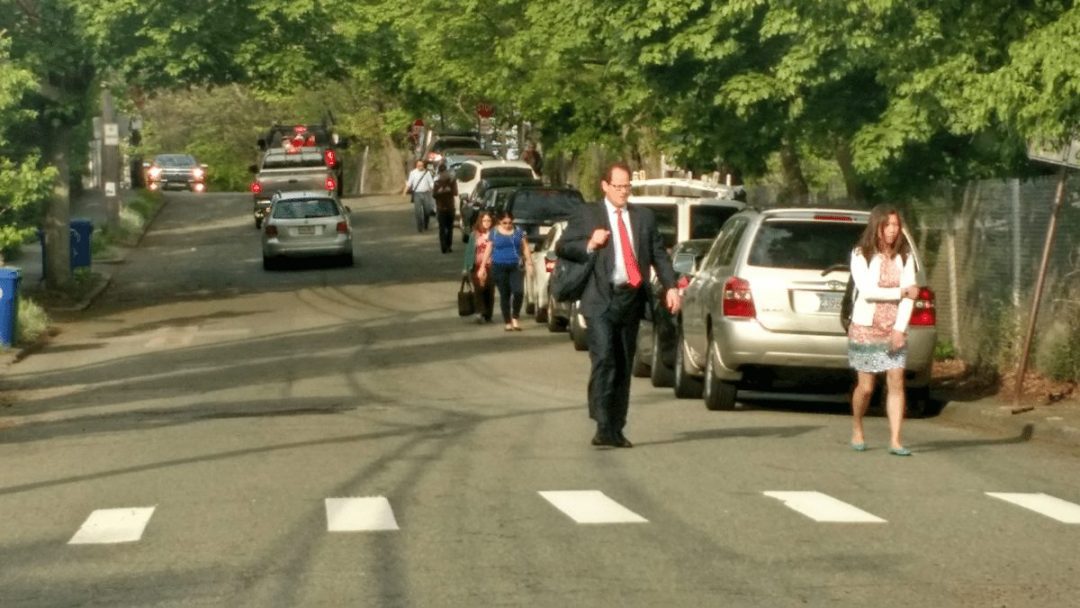
The kind of city that provides this as an alternative: a 3-1/2 ft, rough sidewalk, with a chain-link fence hard up against one-side, and multiple trees and signs blocking the way. 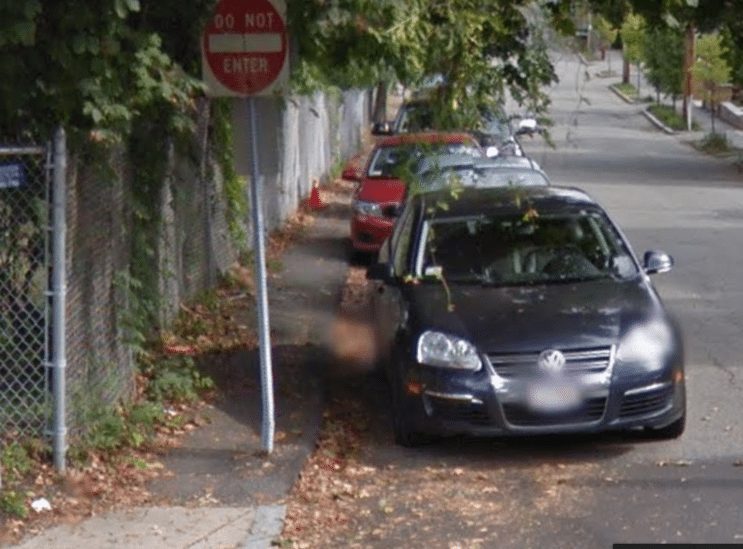
Those 3-1/2 ft. are not fit to be called a sidewalk.
It doesn’t have to be this way.
The topic of our discussion is Braeland Ave., a one-way street on the south side of the Newton Centre T stop. There’s plenty of street width (28 ft.) for a protected passage for pedestrians (say that 3 times fast!), a bike lane (or more), the existing parking, and a vehicle lane.
Here’s the Braeland Ave. street s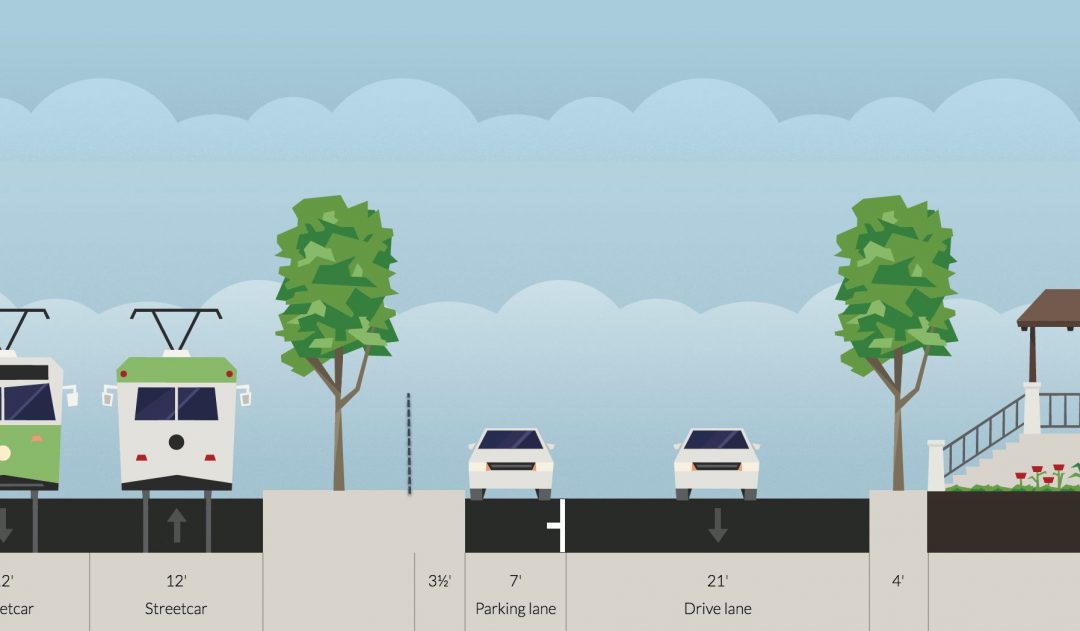 ection currently.
ection currently.
Imagine the tree on the left is on a hill down to the tracks. There’s the fence, the 3-1/2 ft. not-really-a-sidewalk, a parking lane, and a huge travel lane. Among other things, such a huge travel lane encourages speeding.
To provide a safer walk for pedestrians you would, ideally, update and widen the sidewalk. But, that costs big money and requires planning and design. For relatively short money (in the thousands), you could divide the road with paint and reap huge benefits. 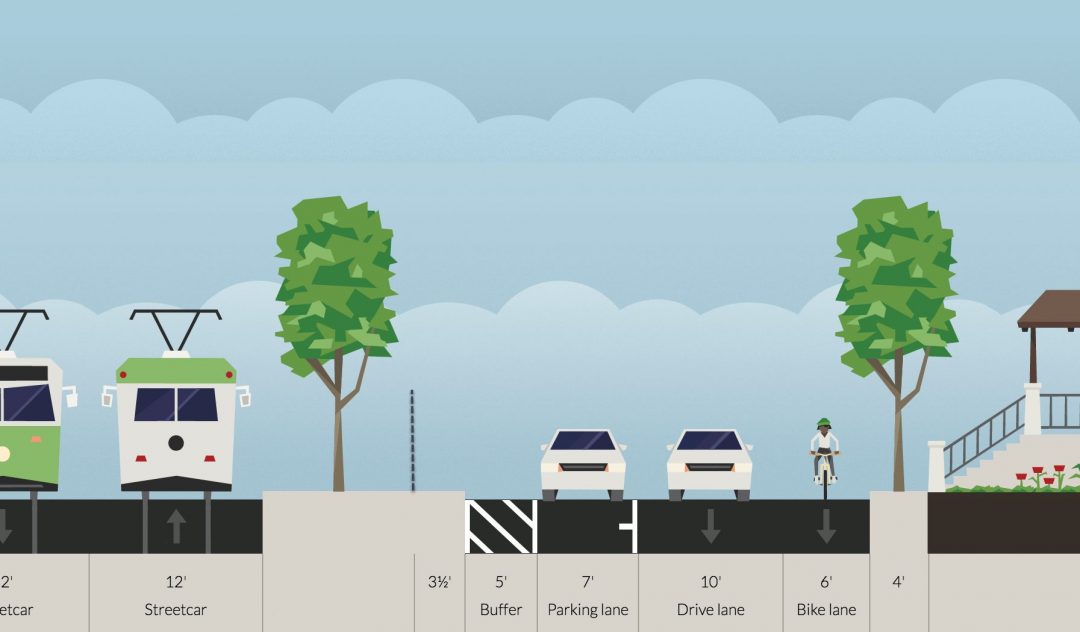
Move the parking over five feet to create the pedestrian passage, protected by the parking. Add a nice, safe, six-foot bike lane on the other side. That leaves ten feet for a travel lane, absolutely sufficient for a street like Braeland Ave. Importantly, folks who live on the south side (right) would have plenty of room (16 ft.) to get in and out of their driveways. And narrowing the travel lane (physically with the parked cars and with the painted bike lane) would almost certainly reduce speed.
If you wanted to be really creative, you could make the bike lane contra-flow (against traffic), and have same-direction bike accommodation be a sharrow. 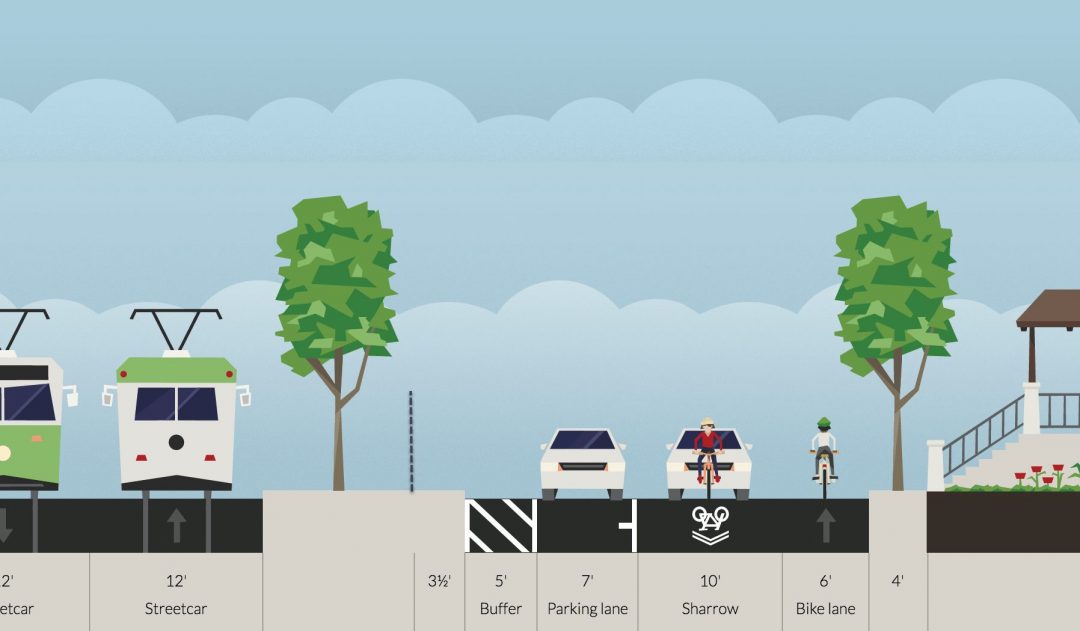
Given the volume of traffic on the street, that would probably provide the maximum, safe bike accommodation you can create with paint. (As with the sidewalk, the ideal bike solution would be some sort of separated bike facility.)
While we’re at it, why is the parking along here free? (There are meters on the first few spaces off Langley.) Now that the city has Parking Passport, we can charge for these spaces without adding meters or a kiosk. (Yes, I’m suggesting that, during the period of paid parking, these spaces would only be available to people with smart phones.)
Bottom line: there’s just no good reason to make people walk in the street.

Add some developer funded Newton Centre streetscape improvements for the proposed Hotel + Housing + Restaurant project. NC is a prime city show piece and if the city wants to draw tourist dollars, then make surrounding areas work better and look nicer for residents and visitors.
P.S. is there a way to create an account so I don’t have to enter my name/email every time?
You should swing up to Nonantum sometime during the winter and try and walk to the express bus without slipping and busting your rear.
@Shawn. Good post. Makes sense to me.
The same city that makes its high school students walk through a parking lot.
Love this idea though. You knew I would! Funding this project wouldn’t even require developer funds, though there should be plenty of that coming. There’s Chapter 90 money and Newton Centre parking receipts. Besides being a focal point for public transportation, both for the neighborhood and for bus transfers, this hits on almost every aspect of complete streets. Here are a couple more:
adding a real sidewalk with space for trees would provide some much needed screening for neighbors from the T and chain-link fence.
A curb extension at the intersection with Herrick could narrow down the nearly 30 foot crossing distance by about 2/3 (!) Then drivers might stop going down Braeland the wrong way!
A curb extension and waiting area with benches could be provided for shuttles (those people presently wait in the street, too)
A sheltered bike rack (with contraflow lane) would be perfect for people on the south side to reach the inbound platform.
And parking… right now Braeland is a prime example of how not to manage parking. Free parking for early commuters, when Union Street employees and customers could really use it. Then, at 4pm when some calming is needed, the parking is eliminated and the street turns into an even wider single-lane speedway.
I endorse all of Adam’s recommendations.
My intention was to propose a paint-only solution that can/should be done next week. And, by next week, I mean next week. This is the kind of thing the city should be able to solve very quickly.
(Okay, outreach to the abutters ought to come first. But, that doesn’t need to take years.)
Seems like a good idea until dollars are available for a permanent fix.
Off topic: I love bike lanes, anywhere it’s safe. My concern has always been for the biker. I haven’t seen a bike lane that appropriately protects the biker. It will probably be too expensive for cities and towns to invest in, but it’s always on my mind when I pass a biker on the road.
Good idea. The situation is worse in winter when the “sidewalk” is generally piled with snow since nobody seems to have responsibility for clearing it.
What about the part of Braeland that is two-way for cars at the Cypress Street end? The situation is worse there.
Mark, there was some speculation that the old Newton Centre Library project could have incorporated the Cypress Street Lot and decked over the T to provide more parking and/or open space adjacent to the Cypress end of Braeland. That might be the only way to widen those sidewalks. I don’t know if that would have created a better outcome, but because of Newton’s love affair with parking lots, we may never know!